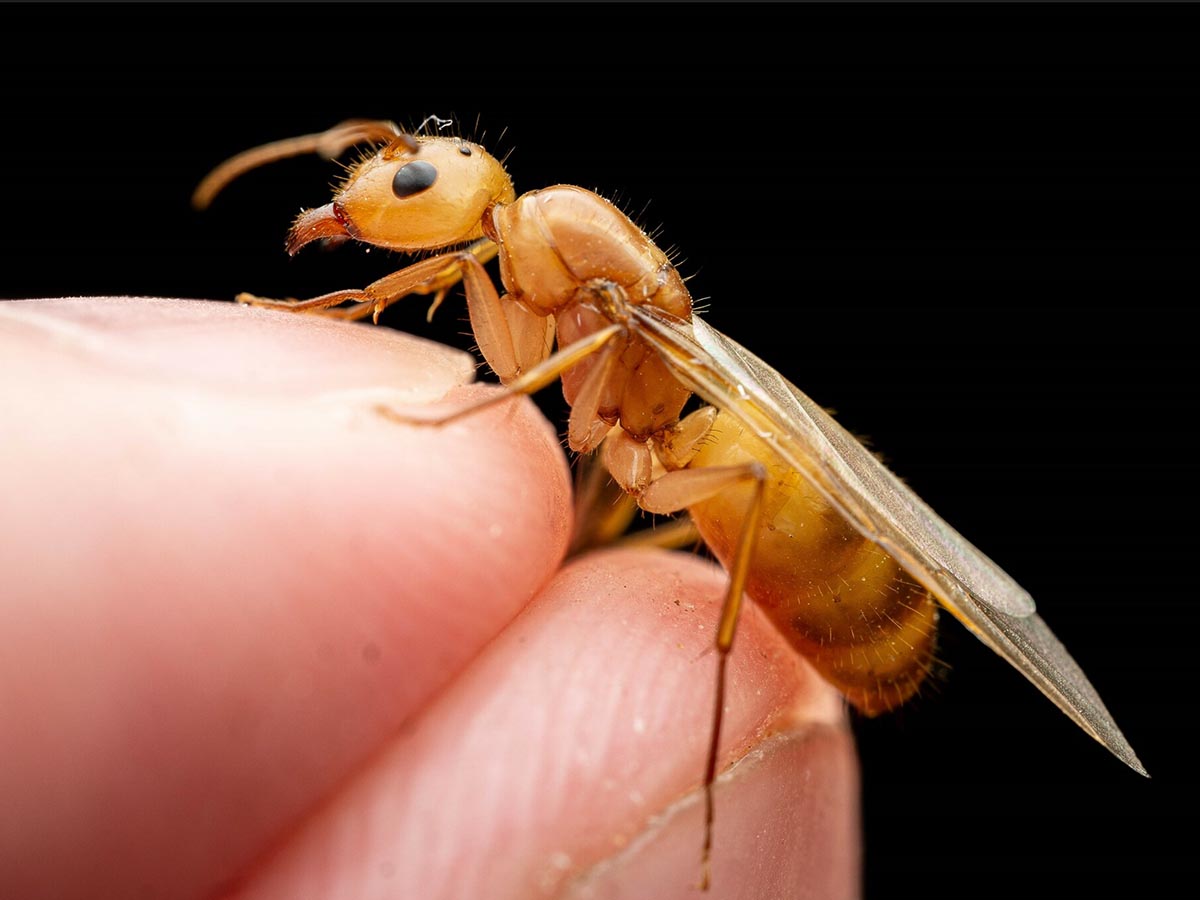Fraggles Carpenter Ants (Camponotus fragilis)
Camponotus fragilis is a medium sized, golden, faster-growing species of carpenter ants. STATES AVAILABLE TO BUY: AZ, CA, NM, TX
Introduction
Carpenter ants commonly nest in decaying wood or moist soil under rocks. Their colonies thrive through a well-organized division of labor among three types of workers:
- Minor workers: The smallest, focusing on brood care and light tasks.
- Median workers: Intermediate in size, versatile generalists handling foraging and nest maintenance.
- Major workers: The largest, acting as soldiers for defense and performing strength-intensive duties.
This system ensures efficient task allocation, contributing to the colony’s productivity and survival.
Temperament
Carpenter ants are sensitive to noise, bright lights, and vibrations, which can easily stress the colony, especially when it’s young and has few workers. While they can tolerate light, sudden transitions from darkness to light can frighten them. Avoid offering live insects as food until the colony has at least 50 workers, as this can be highly stressful for smaller colonies.
Feeding
Small or Young Colonies
- Frequency: Feed every 2–3 days.
- Diet: Small amounts of protein (insect parts) and carbohydrates (sugar water, Sunburst Ant Nectar, or honey).
- Tip: Though they eat very small quantities, often at night, they are still consuming food.
Medium to Large Colonies
- Frequency: Feed daily or every other day.
- Diet: Balance protein (for brood growth) and carbohydrates (for worker energy).
Seasonal Adjustments
- Spring/Summer: Feed more frequently as the colony is active, with high brood production. Protein is crucial for larvae development.
- Winter (Dormancy): Reduce feeding to 1–2 times weekly. Not all carpenters are “dormant” in the winter time but they usually slow down and the queen doesn’t lay as many eggs.
Feeding Tips
- Protein Sources: Insects (crickets, mealworms, or superworms), cooked egg whites, or small bits of chicken.
- Carbohydrate Sources: Sugar water, diluted honey, Sunburst Ant Nectar, or fruits.
- Monitor Leftovers: Remove uneaten food before the next feeding to prevent mold or pests.
- Observe Behavior: Adjust feeding frequency based on food consumption.
Housing
Carpenter ants are sensitive to noise, bright lights, and vibrations, which can easily stress the colony, especially when it’s young and has few workers. While they can tolerate light, sudden transitions from darkness to light can frighten them. Avoid offering
1. Test Tube Setup
- Keep the colony in the test tube until it has 10–15 workers.
- Mini Outworld: Attach a mini outworld once there are 5–6 workers to simplify feeding.
2. Transition to Formicarium
- Move the colony to a formicarium only when ready, ideally when the colony fills 1/4 of the new space.
- Size Matters: Ensure the formicarium is not too large to avoid stress and prevent mold buildup from unused areas becoming trash dumps.
3. Environmental Conditions
- Dryness: Carpenter ants thrive in drier environments. Avoid overwatering the formicarium, as excess moisture can make the nest uncomfortable, causing ants to temporarily relocate to the outworld.
- Temperature: Use a heat cable in spring and summer to maintain warmth. During fall and winter, reduce heat if the colony’s activity slows (e.g., less egg-laying or brood development).

